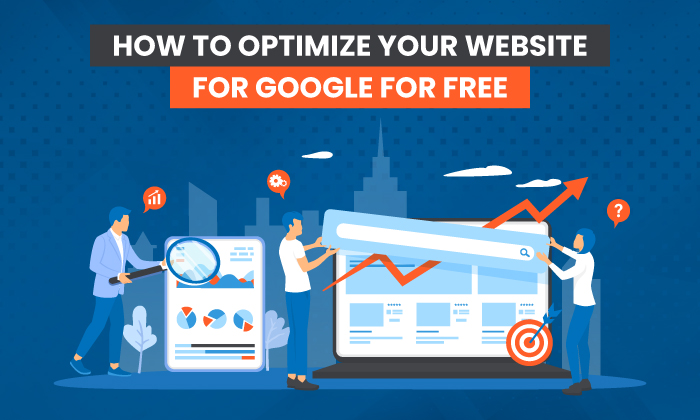
The key factor in the “great SEO game” is how well you optimize your site. No matter how brilliant a product or service you have, you’ll have a hard time making money if no one can find it.
This guide will help you understand how to optimize your website—for free—without having to use paid tools, services, or products.
Why Should You Optimize Your Website?
When you ask yourself how to improve your website, the first thing that should come to mind is SEO optimization. We all want a website that will rank well, drive traffic, generate conversions, and help make us more money. That’s the dream, right? Well, that dream starts with a properly optimized website.
If we think back a couple of decades or so, we’ll remember simpler times where anyone could purchase a domain, make a website, and expect to get traffic. Now, as we all know, the internet is flooded with competition across pretty much any niche.
As a result, you need to be more strategic about the type of site you create, the niche you enter, and how you plan to stand out within that niche. The best way to stand out and generate attention is by carefully optimizing your site, so Google’s SERP algorithm shares you with relevant users over any competition.
Is It Possible to Optimize Your Website for Free?
A lot of marketing decisions can be expensive. Luckily, SEO is not.
It’s really easy to get started through simple methods like using alt text, creating content, and detailed keyword research. No matter your budget, you need to dedicate time and attention to your website optimization. Remember—everyone starts somewhere, and the good news is that you can completely optimize your website for free; you just need to be a bit more thrifty.
First, you have to develop a strong understanding of technical SEO and how it works.
If you’re starting from scratch, that’s okay. There are a ton of free resources online from YouTube to free courses, to endless information on my site from myself and other industry experts. The information is there, you just need to piece it together in a way that makes sense to you.
How to Optimize Your Website for Free
To help you learn how to optimize your website for search engines, I want to go through a step-by-step process of the essential “pieces” that contribute to a high search ranking. Best of all, if you are prepared to put the effort in yourself, these methods are free and you’ll have the same results as someone with deep pockets.
1. Do Keyword Research
The best on-site optimization always starts with keyword research. Keyword research is the process of finding words and phrases that are both relevant to your niche and also heavily searched on Google.
The trick is to find keywords that a lot of people are searching for that also don’t have a ton of competition. Now, this takes a lot of digging. Doing this on your own without a tool is practically impossible, so don’t even try.
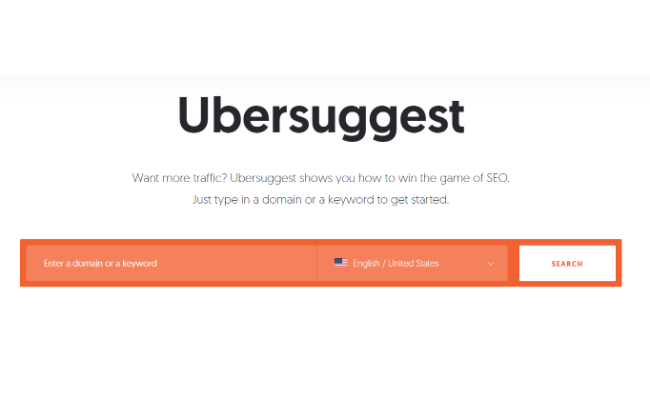
We created Ubersuggest (a free keyword research tool) for beginners with a low budget just like you. You can search competitors based on your niche to see what they’re already ranking for on Google and then include those keywords on your site and in your blog articles.
Ubersuggest also allows you to input keyword ideas and its smart algorithm even provides you with a list of keywords that would be a good choice for you to use on your site.
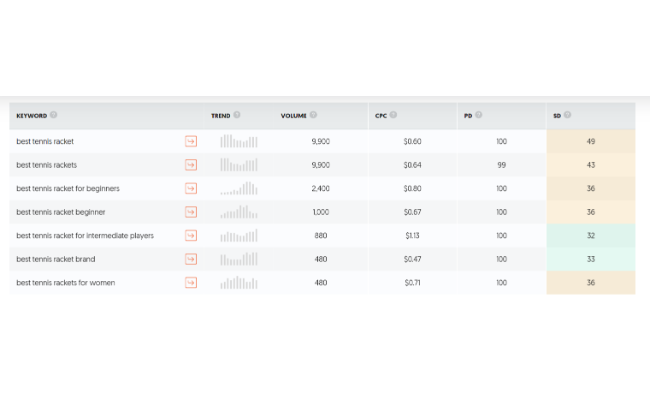
As you accumulate relevant and useful keywords across your website, you’ll find that you start to rank higher on Google for certain phrases. This results in traffic arriving on your web pages, ultimately increasing click-through rates and conversions.
Why? SEO content works by drawing attention, and then a well-written copy brings value to your audience and solves common problems, encouraging them to purchase. You can also use the free Chrome extension to look at keyword volumes and related keywords during your Google searches.
2. Create Simple Site Navigation
Site architecture can be a difficult concept to understand, but it’s another critical step of optimizing your website. If people can’t easily navigate through your site, it doesn’t matter how great your keywords are or how amazing your offer is because they’ll soon click off.
When designing, you should have an idea of what you want your site to look like before it even exists. Map it out, think about what pages should go where, why they should go there, and ultimately where you want people to end up.
Website layout should allow prospective customers to get from point A to point B without having to click through a ton of pages, so start simple. Don’t overcomplicate your site with hundreds of pages, when you could do the same job with just a few. Not only will creating your website take more time, but it’ll also be harder for you to stick to a low budget.
Here are a few reasons why a basic website is a good way to go.
- Cost-effective: Many people with a decent understanding of tech can build a single-page website themselves on a site like WordPress or Squarespace.
- Easy to crawl: Crawling is a word you’ll see a lot in the website space, and it refers to Google’s ability to go through your site and figure out what it is. Google takes note of your keywords and indexes pages in their database. The more pages you have, the harder it is for Google to understand your goals and provide your products to their audience.
- Speed: Page speed is a huge factor for Google ranking and user retention times. If you have a ton of complicated elements on the site, loading times will increase and so will bounce rates.
3. Create Landing Pages
Every website needs somewhere for the user to land. If you’re using key marketing skills to drive traffic from your social media profiles you’ll need a landing page they can click over to before you sell to them or introduce them to your offer. The verbiage, colors, and selling points should be the same on your landing page as they are on social media.
In fact, landing pages are a great alternative to detailed websites. With tools like Leadpages and ClickFunnels, more and more people can funnel high-intent customers to appropriate locations. Landing pages are simple to use, easy to optimize, and a decent option for people on a tight budget. Keep in mind that some tools aren’t free though, and prepare to shop around.
4. Optimize Your Website for Mobile Usage
With most of the world now using their smartphones on a regular basis, it’s more important than ever that our websites look good (and are usable) on mobile phones. This means you need to carefully consider how users might land on your website and factor this into your design and layout—which can be complicated if you aren’t comfortable with website building.
Thankfully, many of the budget-friendly website hosters have mobile optimization built into their service. You want a website that doesn’t have anything cut off on the sides, all the buttons work, each link works, and everything can be easily read on both computer and phone. If you haven’t visited your website from your mobile phone in a while, double-check everything is working now (and change things if not.)
5. Check Site Speed
Google provides a free tool called “PageSpeed Insights.” You simply search your URL, and it’ll tell you how fast your page loads. As you see below, I tested out my personal homepage to see what Google thinks of it.
I didn’t get a perfect score, but that’s alright. Below, they provide you with diagnostic information to explain the rating. Some examples of issues would be too much third-party code and a long cache (which can be easily fixed).
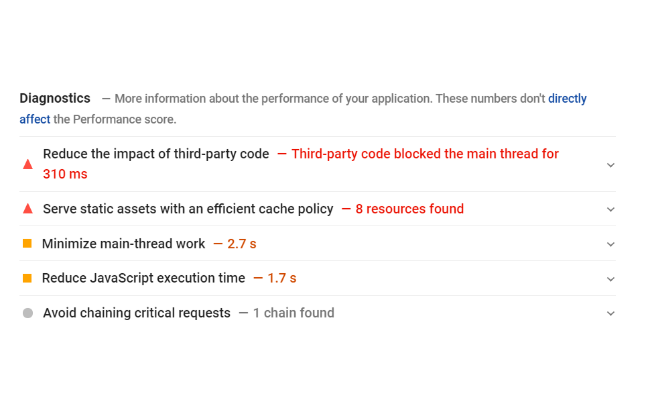
Use this tool to see how fast your website loads and what improvements you can make. Overall, the faster the better as Google’s algorithm will now use loading times as a ranking factor when determining the user-friendliness of your website.
Best Resources to Optimize Your Website for Free
We talked a little bit about the actual resources you can use to optimize your website but now let’s get a little more specific. Here are some free tools you can start using right away.
1. Learn SEO in 5 Minutes
The internet is full of free resources, and all you need to do is look for them. If you can engage your mind and work through the steps independently, you can understand SEO basics in five minutes or less.
2. See What Competitors Are Doing
One of the best free ways to optimize your website is to take a look at your competitors and get an idea of what they’re doing. For example, if you have a tennis e-commerce store and you’re struggling to gain traction on it, you might want to look at some other stores in the same niche and see what they’re doing.
Look at their blog posts, product pages, media, headers, titles, landing pages, and so on. As you’re looking at these factors, take notice of things that are working for them (such as posts with high comment engagement) and start implementing them on your site. See what works and what doesn’t.
3. YouTube
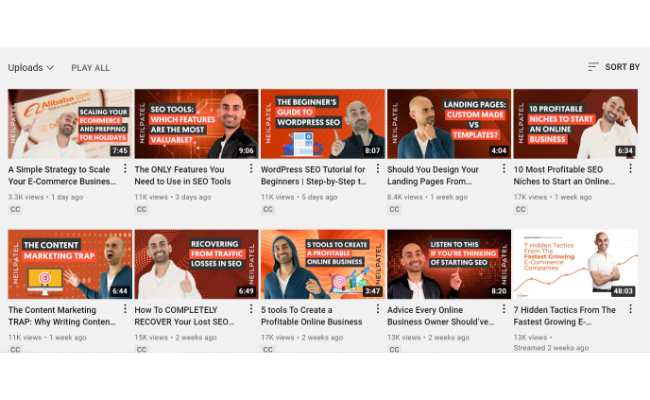
YouTube is an amazing resource for anyone looking to learn SEO. If you know nothing about SEO, you can spend 30 minutes a day on YouTube and become highly knowledgeable in no time.
Whether you’re using my channel or someone else’s, there are dozens of real experts who understand how to optimize a website for search engines. Watch the videos, gradually implement the tips, don’t take shortcuts, and you’ll soon have a much easier time growing your site.
4. Google Search Console
If you link your website with Google Search Console, you’ll gain access to a ton of free resources that will tell you a lot about your website’s performance. You’ll be able to see individual page performance, page loading speed, broken links, and traffic data.
Plus, all the data you receive in the search console is verifiably accurate because it comes directly from the source.
5. Free Ubersuggest
I talked briefly about Ubersuggest, but I want to mention it again because of how important keyword tools are to SEO optimization. They truly are designed to make your life easier, and while there are other alternatives out there, Ubersuggest is a great user-friendly tool for business owners on a low budget. It will steer you in the right direction for your on-page SEO and help you make decisions that can improve your site.
It’s important that you are using the right keywords in your content, as you don’t want your time and effort to go to waste. You deserve results, and keywords help Google’s algorithm read what your site is about and how it relates to the people that are searching for you.
If you don’t have a ton of relevant keywords on your site, Google will not be able to figure out the purpose of your website and you’ll have a hard time ranking for anything. Ubersuggest makes it easy to find the best low competition keywords for you to target.
Optimizing Your Website for Free Frequently Asked Questions
Here are some of the most frequently asked questions about optimizing your website for free.
Can SEO Be Done for Free?
How Do I Optimize My Website Without Paying?
What Are Some Tips for Optimizing Your Website in 2021?
What Are Some Free SEO Tools?
Optimize Your Website for Free Conclusion
Learning to optimize your website is an important part of the SEO journey for beginners and soon-to-be experts in online lead generation. If you don’t have a properly optimized site, Google’s algorithm may struggle to interpret your site and you’ll end up having a harder time ranking for the search phrases you want.
Follow the steps outlined in this guide and you’ll be well on your way to generating more traffic, increasing your brand awareness, and ultimately, earning more money.
What are some of your favorite free SEO tools?
from Blog – Neil Patel https://ift.tt/3CuyqBD

No comments:
Post a Comment